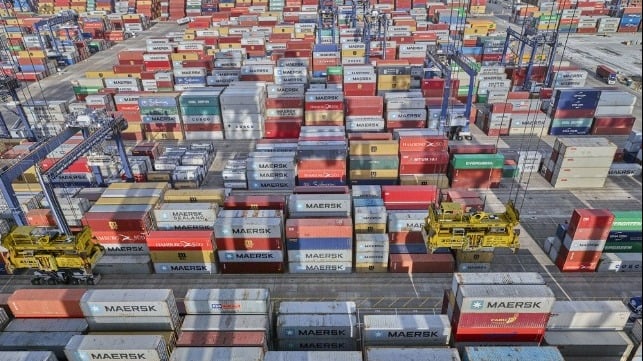Record High Container Contract Rates Here to Stay Predicts Xeneta

With the demand for container shipping continuing to rise, long-term contract rates are climbing to unprecedented highs according to new data from ocean freight market intelligence firm Xeneta. They report that all key shipping corridors registered steep increases since the beginning of the year, driven by continuing surging demand, lack of equipment supply, and spot rates that remain at peak levels.
According to the latest XSI Public Indices report from Xeneta, rates soared by 9.6 percent month-on-month following January’s increase of 5.9 percent. Saying that the current move has “been nothing short of dramatic,” the new report highlights that the index is now at its highest ever level. It was up 13.9 percent year-on-year, with a 16 percent climb during the first two months of 2021.
“Shippers praying for a ‘time-out’ in this frenzied arena may have to steel themselves for more of the same,” warns Xeneta CEO Patrik Berglund. “It’s no overstatement to say this really is an extraordinary time for the industry. The demand for available containers is well-reported, as is congestion at ports (particularly in the US) and the disruption caused by coronavirus. This continues to fan the flames of red-hot rates, giving the carriers a huge advantage over shippers when it comes to negotiations.”
The strength of the market is demonstrated by the unusual fact that every key trade corridor in February, in terms of both import and export, recorded significant climbs on Xeneta’s index. In Europe, imports rose by 9.6 percent (following last month’s 19.3 percent gain) with the index now up 21.1 percent year-on-year. The exports benchmark, meanwhile, saw its largest ever monthly hike of 11.1 percent, driving a 7.7 percent increase against February 2020 rates.
Developments in the Far East and the U.S. were equally dramatic. Far East imports set new records with the index rising by 38.9 percent, the biggest single monthly increase seen on the indices. The index is up 25.7 percent higher year-on-year and while export figure could not keep pace, they still grew 8.1 percent, pushing the benchmark up 27.4 percent versus last year. US imports rose by 7.1 percent (7.9 percent year-on-year), while exports saw their greatest ever increase in the report, up 17.6 percent month-on-month. However, they remain down 2 percent against February 2020.
“The operators have succeeded in maintaining all-time high spot rates and this gives them ammunition for negotiating favorable long-term contracts,” says Berglund. Shippers run the risk of playing the spot market and hoping for lower rates or lock into contracts at a high price. He explains that for smaller shippers there is a real danger of being sidelined for larger or more profitable customers.
Berglund says the dynamic nature of the market makes second-guessing future developments problematic, although he does see inevitable “adjustments” ahead in an evolving segment. He points to the lines rescheduling capacity from the congested Southern California port as one opportunity to create efficiencies and create capacity which could impact rates. In Europe, he also points to new services such as China United Lines and efforts to provide capacity for smaller shippers.
“In the long-term fundamental change is possible,” Berglund concludes, “but for the short-term shippers should be prepared for the probability of further demanding negotiations and continuing high rates.”
Xeneta’s XPI index is developed from crowd source shipping data capturing the latest rates from leading shippers with more than 160,000 port-to-port pairings.
